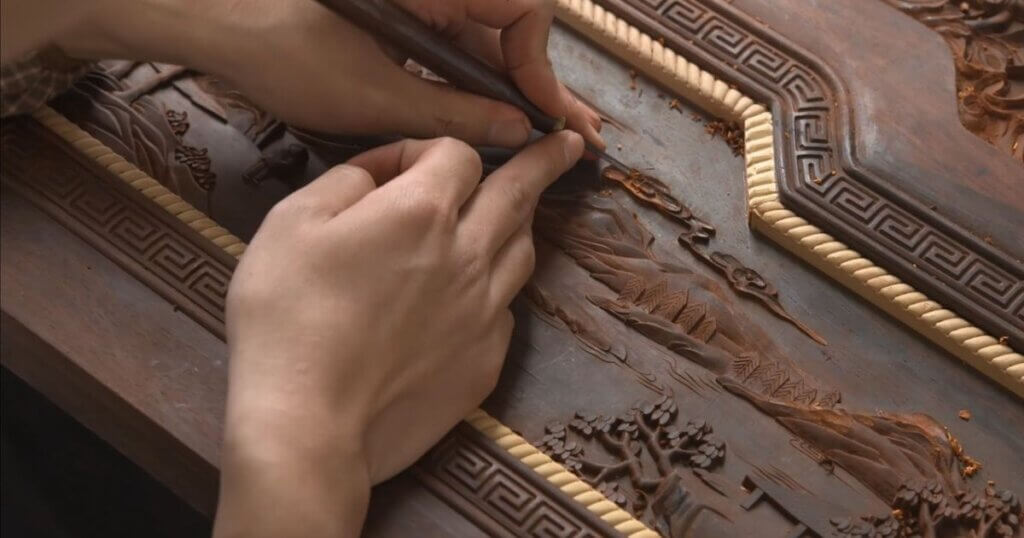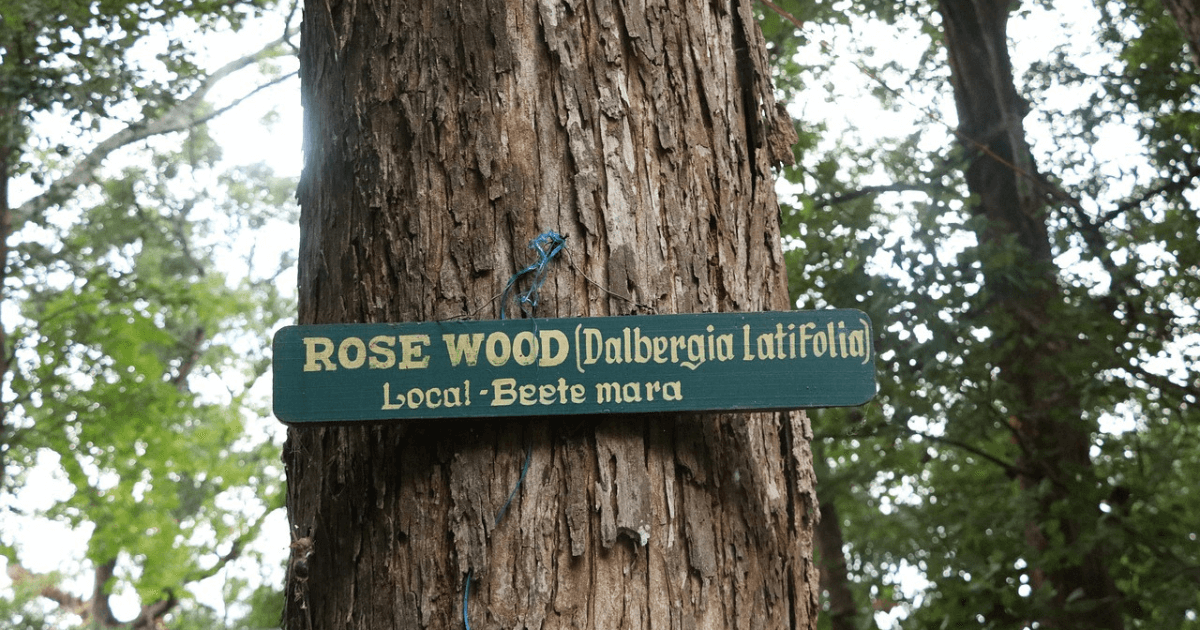Jatoba is generally lighter in color, ranging from light orangish brown to reddish-brown, while Rosewood is known for its dark chocolate-brown color. Both species have distinctive grain patterns.
What is Jatoba wood?
Jatoba wood, also known as Brazilian cherry, is native to Central America, southern Mexico, northern South America, and the West Indies. It is a dense and durable wood known for its beautiful reddish-brown color and distinctive grain pattern.
What is Rosewood?
Rosewood is durable, stable and rot-resistant hardwood. It is often used in high-end furniture and musical instruments. Rosewood is not native to a specific region, as many species of Rosewood and trees are found in various parts of the world, such as Brazil, Honduras, Jamaica, Africa, and India.
Rosewood is the name of many species; there are more than 300 species of Rosewood, and some notable species are named as follows: Brazilian Rosewood, Madagascar Rosewood, Bolivian Rosewood (Santos Rosewood), Siamese Rosewood, Amazon Rosewood, Indian Rosewood, many more.
Jatoba vs Rosewood
| # | Jatoba Wood | Rosewood |
| Scientific name | Hymenaea courbaril | Dalbergia |
| Tree Size | 100-120 ft (30-38 m) tall, 3-4 ft (1-1.2 m) trunk diameter | 100-120 ft (30-38 m) tall, 3-4 ft (1-1.2 m) trunk diameter |
| Janka Hardness | 2,690 lbf (11,950 N) | 2,790 lbf (12,410 N) |
| Rot resistant | Resistant to rot | also resistant to rot. |
| Weight | 57 lbs/ft3 (910 kg/m3) | 52 lbs/ft3 (835 kg/m3) |
| Elastic Modulus: | 2,745,000 lbf/in2 (18.93 GPa) | 2,020,000 lbf/in2 (13.93 GPa) |
| Crushing Strength: | 11,780 lbf/in2 (81.2 MPa) | 9,740 lbf/in2 (67.2 MPa) |
Uses
Both woods are used for flooring, furniture, cabinetry, tool handles, musical instruments and turned objects. Since this wood is naturally resistant to rot and insects, it is used outdoors.
Jatoba wood has excellent moisture-resistant properties, making it suitable for shipbuilding, railroad ties and turning objects.

Which is better for guitar?
Jatoba wood is no more popular than rosewood as an acoustic guitar tonewood. Rosewood offers warmth and articulation to the guitar tone, while Jatoba offers a bright top-end and warm midrange. Jabota wood is challenging to make into a guitar body and is less demanding than rosewood.
Wood Appearance
Jatoba heartwood can range in color from light orangish brown to darker reddish brown, and the sapwood is light brown, while Rosewood can range from light reddish brown to darker chocolate brown.
Both Jatoba and Rosewood woods tend to darken over time due to exposure to sunlight or UV rays.
Jatoba has interlocked or wavy grains, while Rosewood generally has a straight and uniform grain pattern but may also have an interlocked grain.
Workability
Jatoba wood is tough to work with because of its hardness and interlocked grain pattern. Its grain is difficult to cut, shape, and sand and may dull tools more quickly.
To work with Jatoba wood, you must use sharp and right tools; otherwise, you can’t work without tearout.
On the other hand, rosewood wood is easier to work with hand and machine tools. In comparison, the density of rosewood is almost the same as that of jatoba.
Rot-Resistant
Both Jatoba and Rosewood are very resistant to rot and most other insects. Hence they can be used for outdoor purposes even without chemical treatment and require low care and maintenance compared to other woods.
Allergies
No significant Allergies problem has been noticed with Jatoba and Rosewood during working, but problems like skin and eye irritation have been observed with both these woods. That’s why you should exercise caution when working with this type of wood.
Price
The price of jatoba lumber can vary depending on several factors, including the quality of the lumber, the size and thickness of the boards, and its demand in the market.
Generally, jatoba lumber usually ranges from $7 to $12 per board foot. Additionally, some suppliers may offer discounts for large orders or if you buy lumber in bulk.
However, Jatoba wood is a more affordable option than some of the more exotic hardwoods such as teak or mahogany.
On the other hand, rosewood can vary widely depending on the species, but rosewood can range from $20 to $50 per board foot or more.
Jatoba wood Pros and Cons
Jatoba is a very durable wood, but it also has some cons we should be aware of before use. The pros and cons of jatoba wood are as follows.
Pros
- Durability: Jatoba is a very durable and strong wood that is highly resistant to wear and tear, making it an excellent choice for flooring or furniture.
- Natural Rot Resistant: Jatoba wood is naturally resistant to rot and decay, such as termites and carpenter ants, as well as moisture.
- Attractive appearance: Jatoba has a beautiful appearance that can darken over time with exposure to light. After finishing, it gives an excellent result.
Cons
- Expensive: Jatoba is generally more expensive than other types of hardwood because of its durability and popularity.
- Hard to work with: Jatoba is hard to work with because of its density. It may require several coats of stain to achieve the desired color.
Rosewood Pros and Cons
Pros
- Appearance: Rosewood is highly prized for its beautiful color and grain patterns. It has a rich, warm color.
- Durable: Rosewood is a very durable and stable wood. It is also very resistant to rot and insects, making it an excellent choice for outdoor furniture.
- Easy to work with: Despite its hardness, rosewood is relatively easy to work with using the right tools.
Cons
- Cost: Rosewood is expensive; sometimes, it is not readily available in the market.
- Toxicity: Some species of rosewood can be toxic and allergic, causing skin and respiratory problems for woodworkers.
Sustainability
Jatoba wood species is not listed in the CITES Appendices, but the IUCN reports it as a species of minor concern.
On the other hand, due to overharvesting, many species of rosewood are now endangered, and trade is heavily regulated by the Convention on International Trade in Endangered Species (CITES).
READ ASLO

